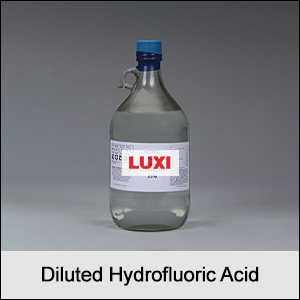Nitric Acid
1. Properties of Nitric Acid:
- Chemical Formula: HNO3.
- Physical State: A colorless to yellowish liquid with a strong, pungent odor.
- Concentration: Commonly available as concentrated (68-70%) or diluted solutions.
- Reactivity: Highly reactive and a strong oxidizing agent. Reacts with metals to produce hydrogen gas or oxides of nitrogen. Reacts with organic materials and may cause combustion.
- Toxicity: Corrosive and toxic, causing severe burns and respiratory irritation upon exposure.
2. Applications of Nitric Acid:
- Industrial Uses:
- Fertilizers: Key component in the production of ammonium nitrate for fertilizers.
- Explosives: Used to manufacture explosives such as nitroglycerin and TNT.
- Metallurgy: Utilized in refining metals and as a pickling agent for steel.
- Laboratory Uses:
- Preparation of nitrates and other inorganic compounds.
- Used in analytical chemistry for sample digestion.
- Medical and Pharmaceutical Uses:
- Used in small quantities for specific chemical syntheses in pharmaceuticals.
- Environmental Applications:
- Used in wastewater treatment to adjust pH and oxidize contaminants.
3. Safety and Handling of Nitric Acid:
- Hazards:
- Corrosive: Causes severe burns on contact with skin or eyes.
- Toxic: Vapors can cause respiratory irritation and damage.
- Reactive: May react violently with organic compounds and reducing agents.
- Protective Measures:
- Always use in a well-ventilated area or fume hood.
- Wear acid-resistant gloves, goggles, and a protective apron.
- Ensure appropriate spill containment measures are in place.
- First Aid:
- Skin Contact: Flush with water for at least 15 minutes and seek medical attention.
- Eye Contact: Rinse immediately with water and consult a healthcare professional.
- Inhalation: Move to fresh air and seek emergency medical care if symptoms persist.
4. Storage:
- Store in a cool, dry, and well-ventilated area, away from incompatible substances like organic materials and bases.
- Use acid-resistant containers, such as those made of glass or specific plastics.
- Keep tightly sealed and label the container clearly.
5. Common Concentrations of Nitric Acid:
- Concentrated (68-70%): Industrial and laboratory applications.
- Fuming Nitric Acid (>86%): Used in specialized chemical synthesis.
- Diluted (<10%): Found in some cleaning agents or etching solutions.



